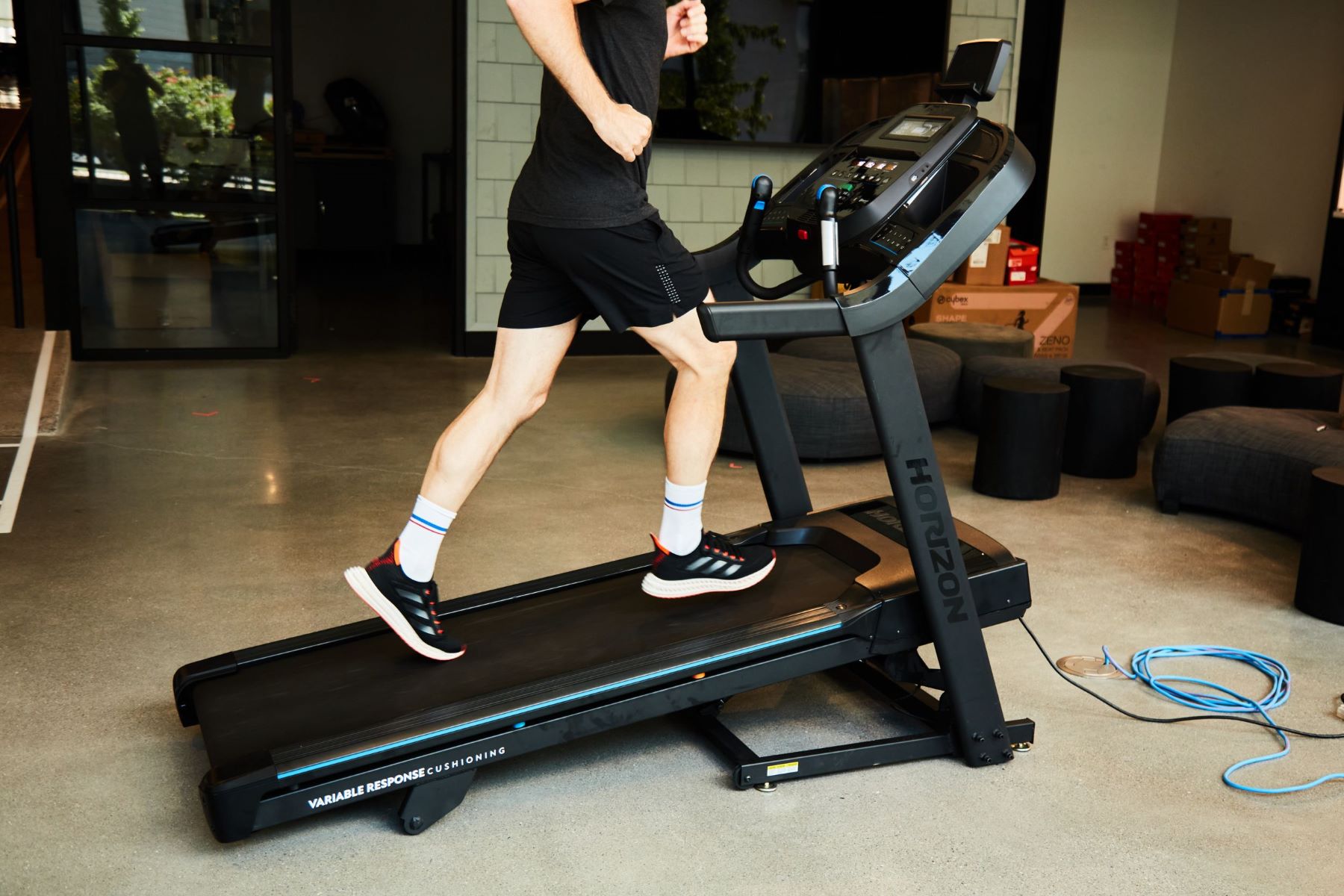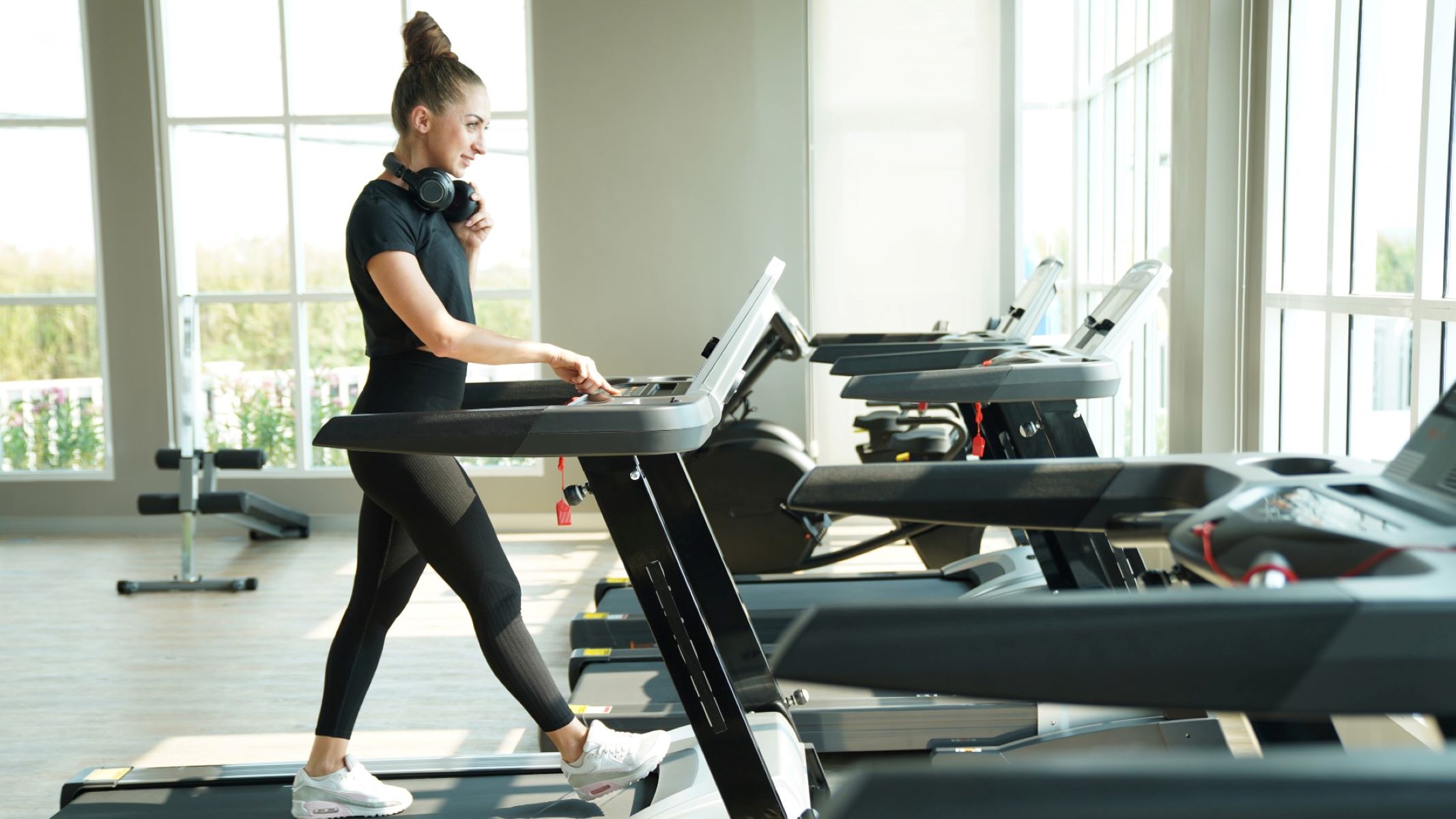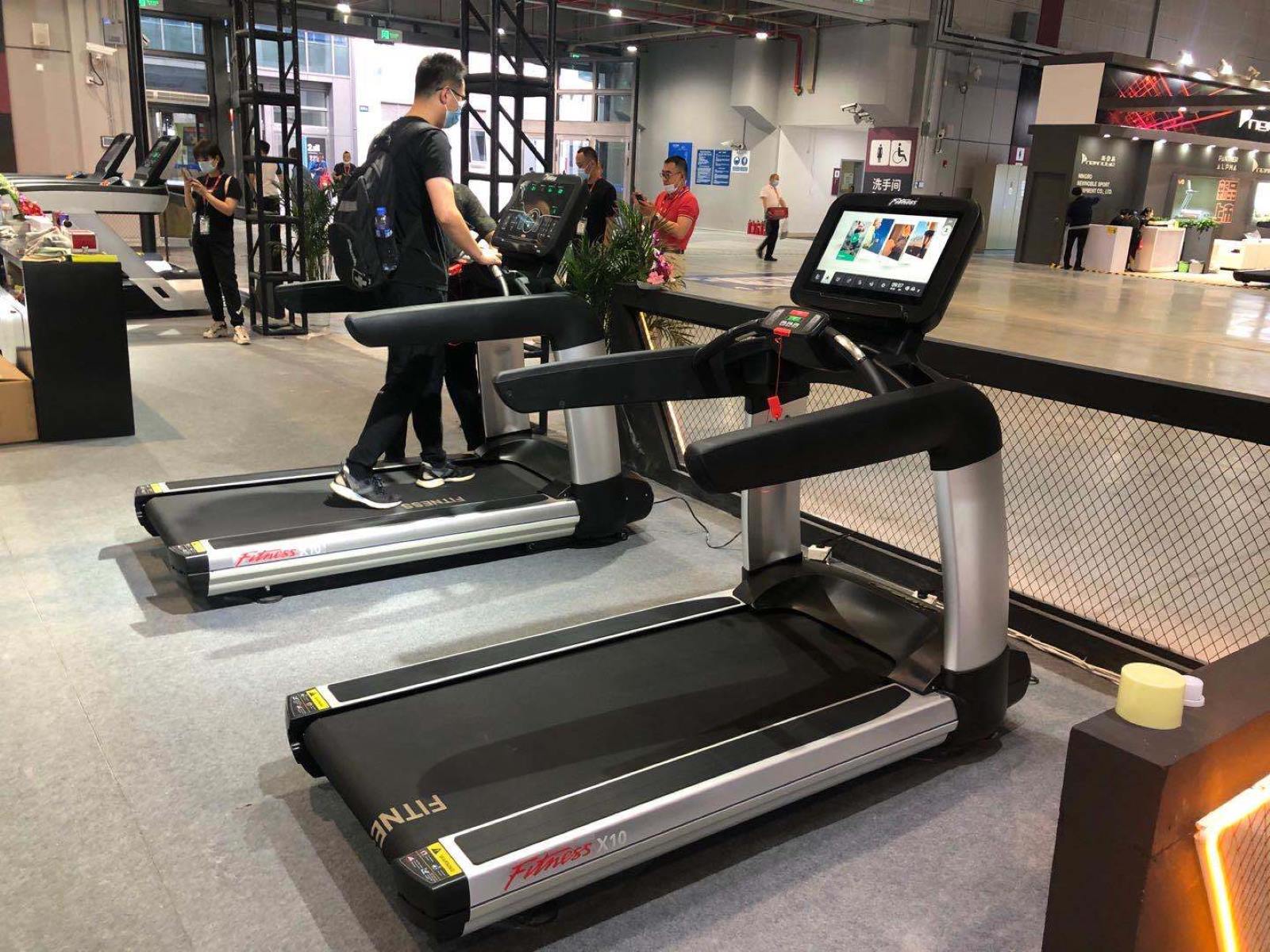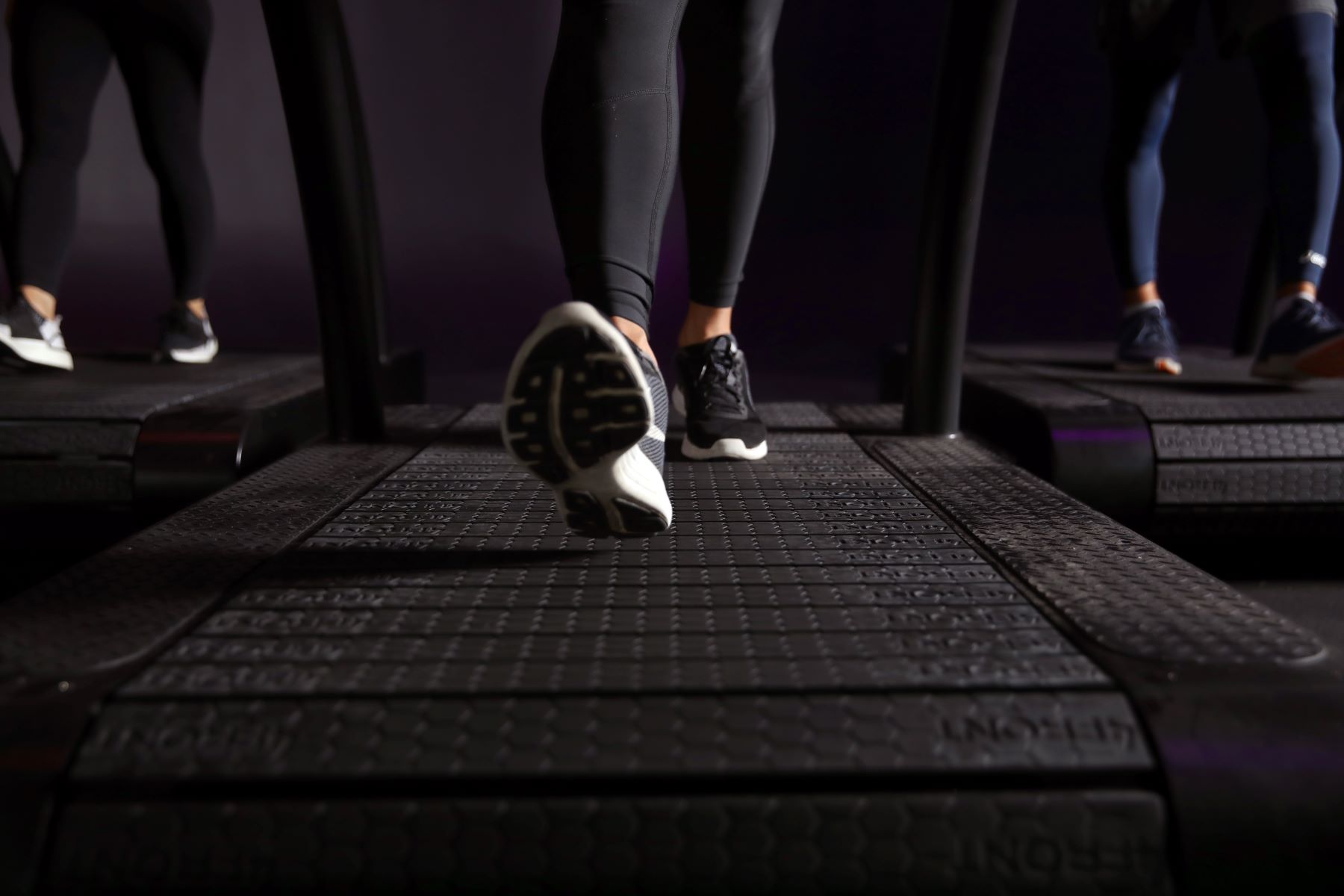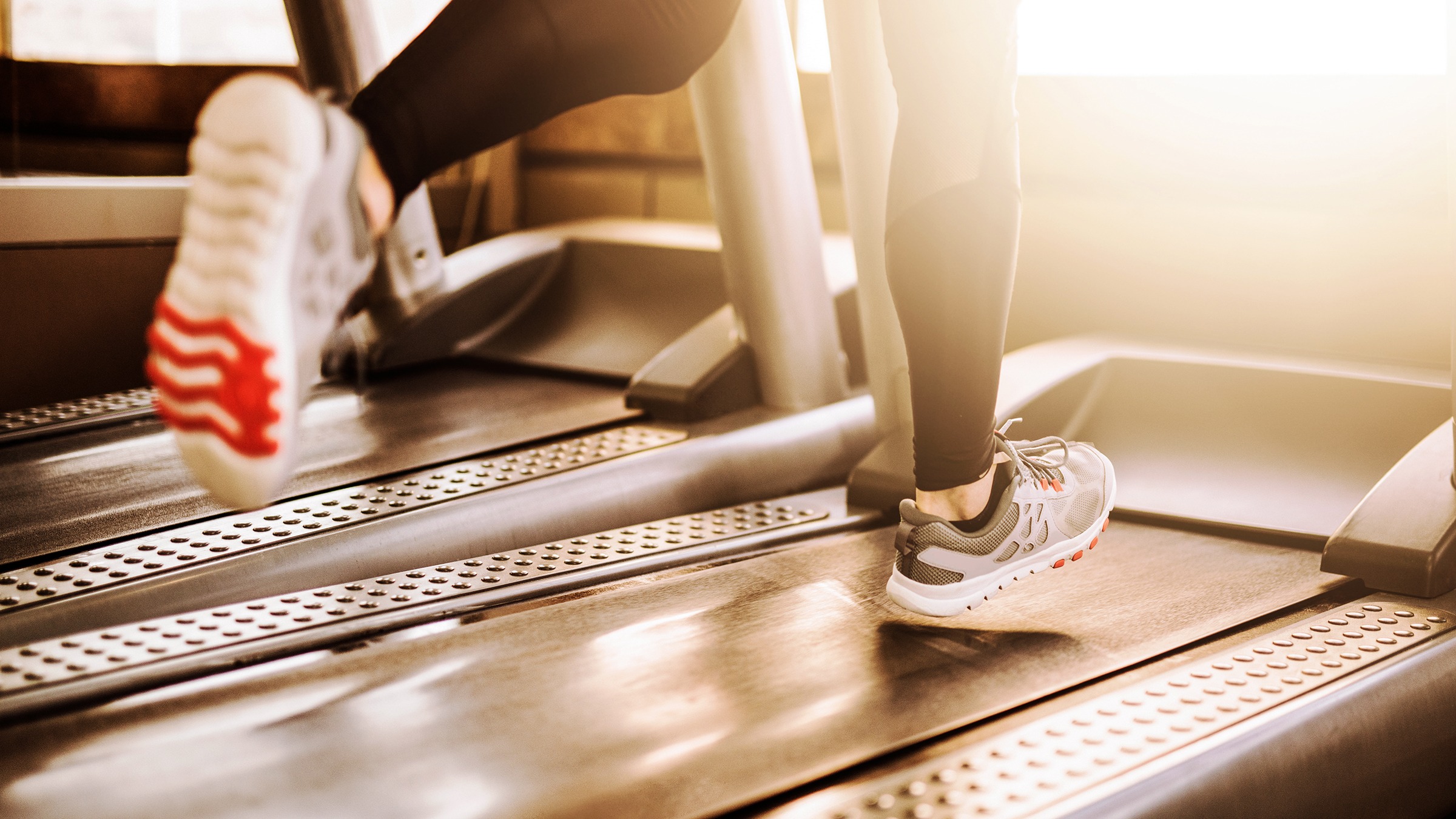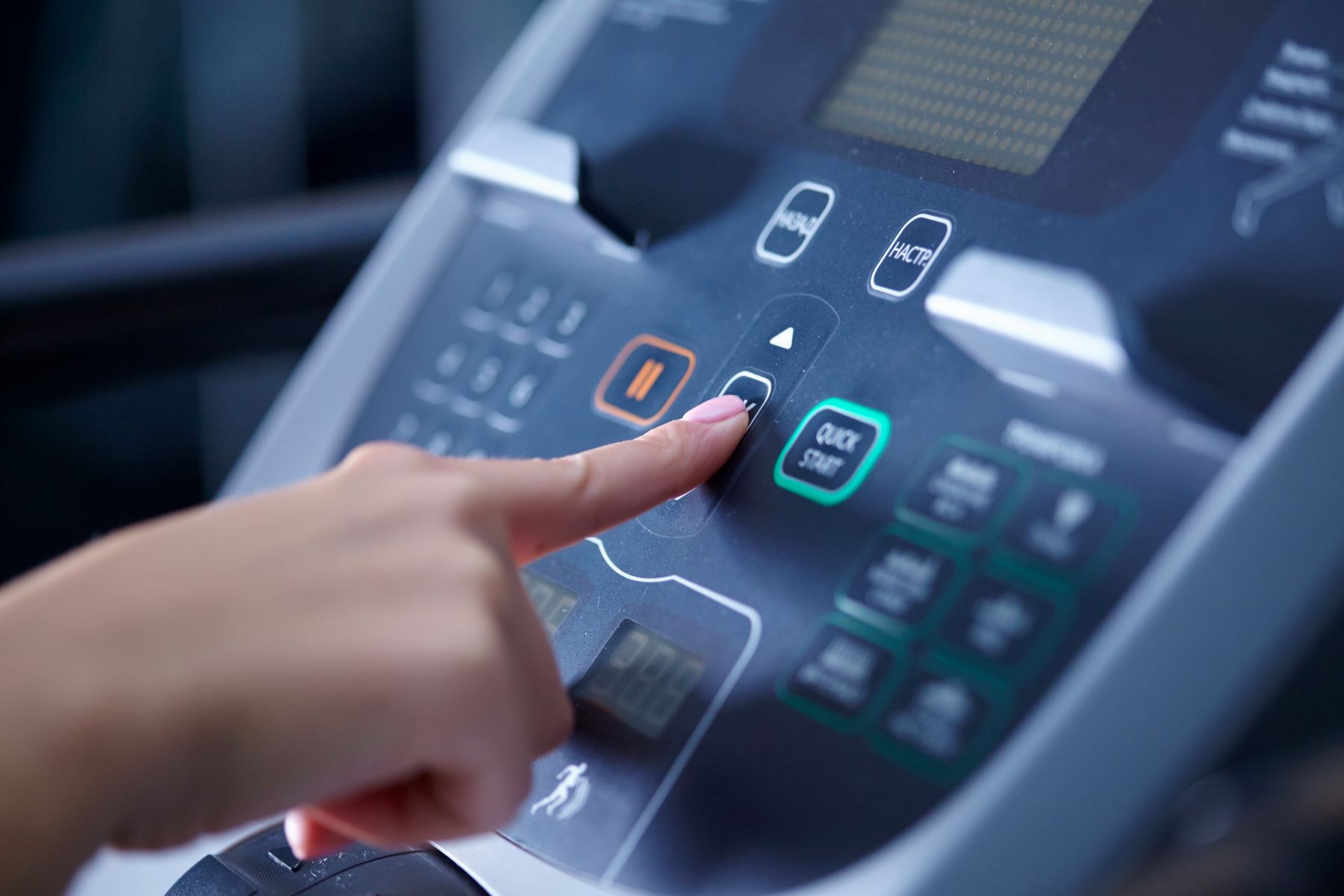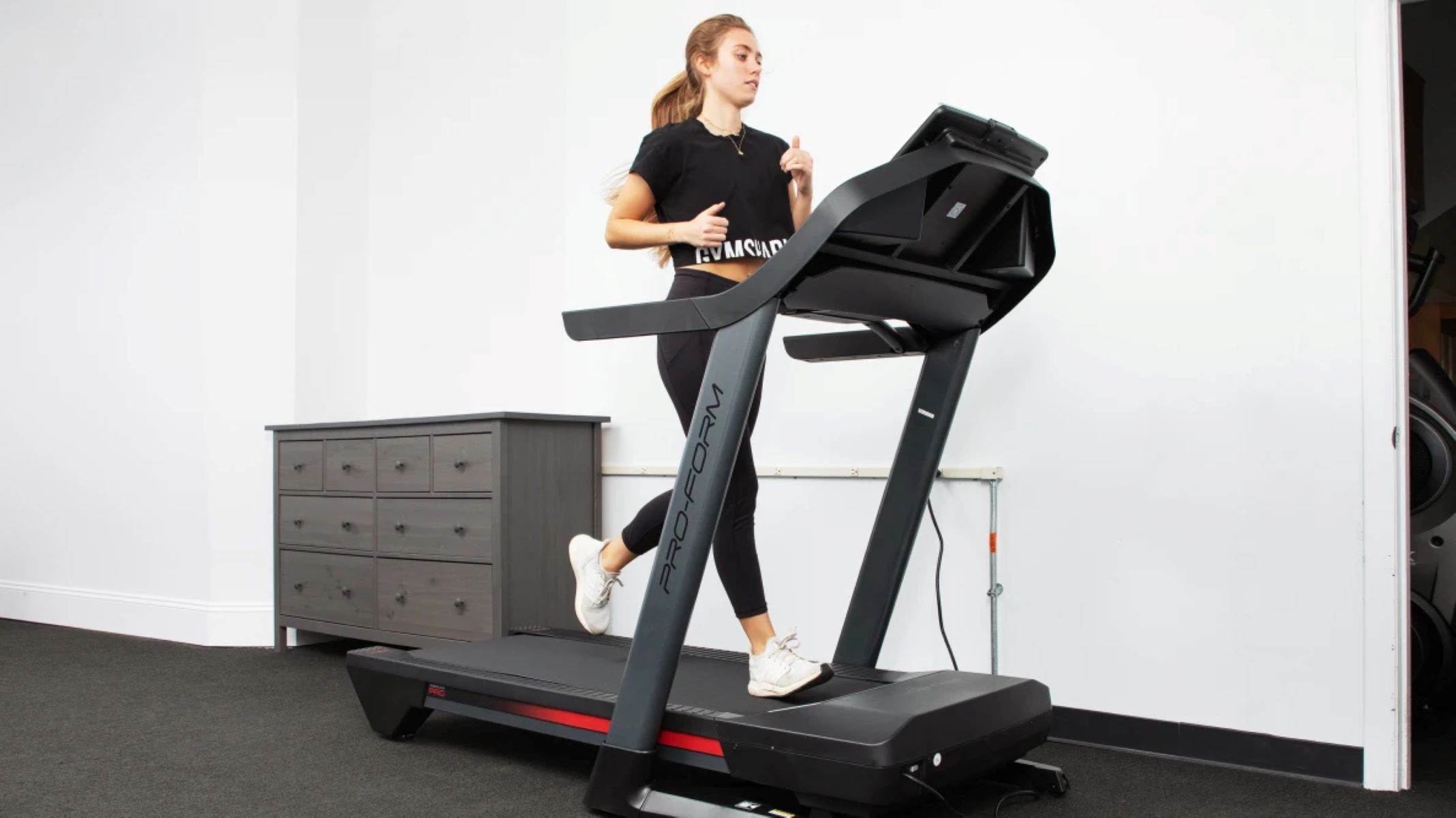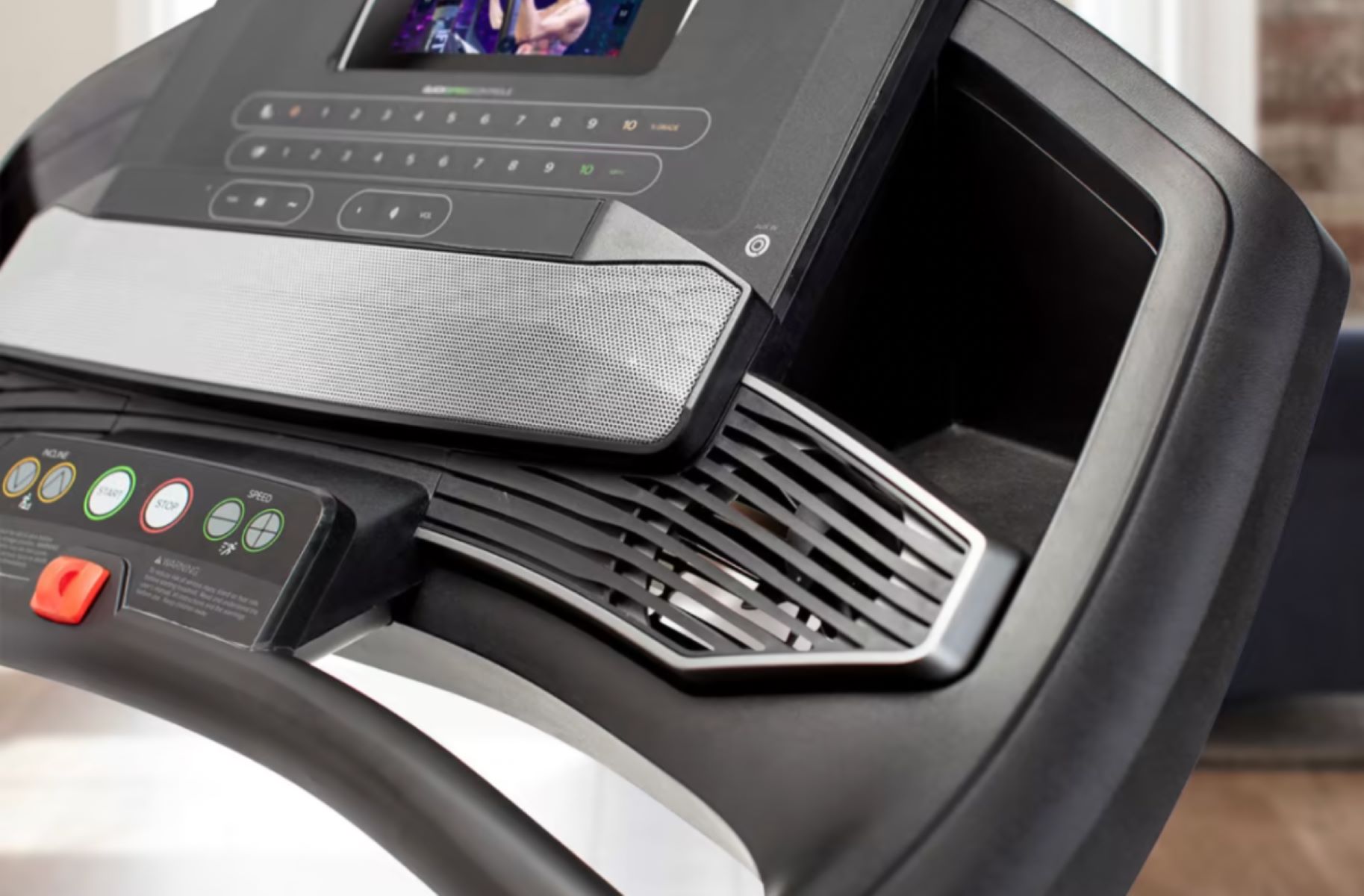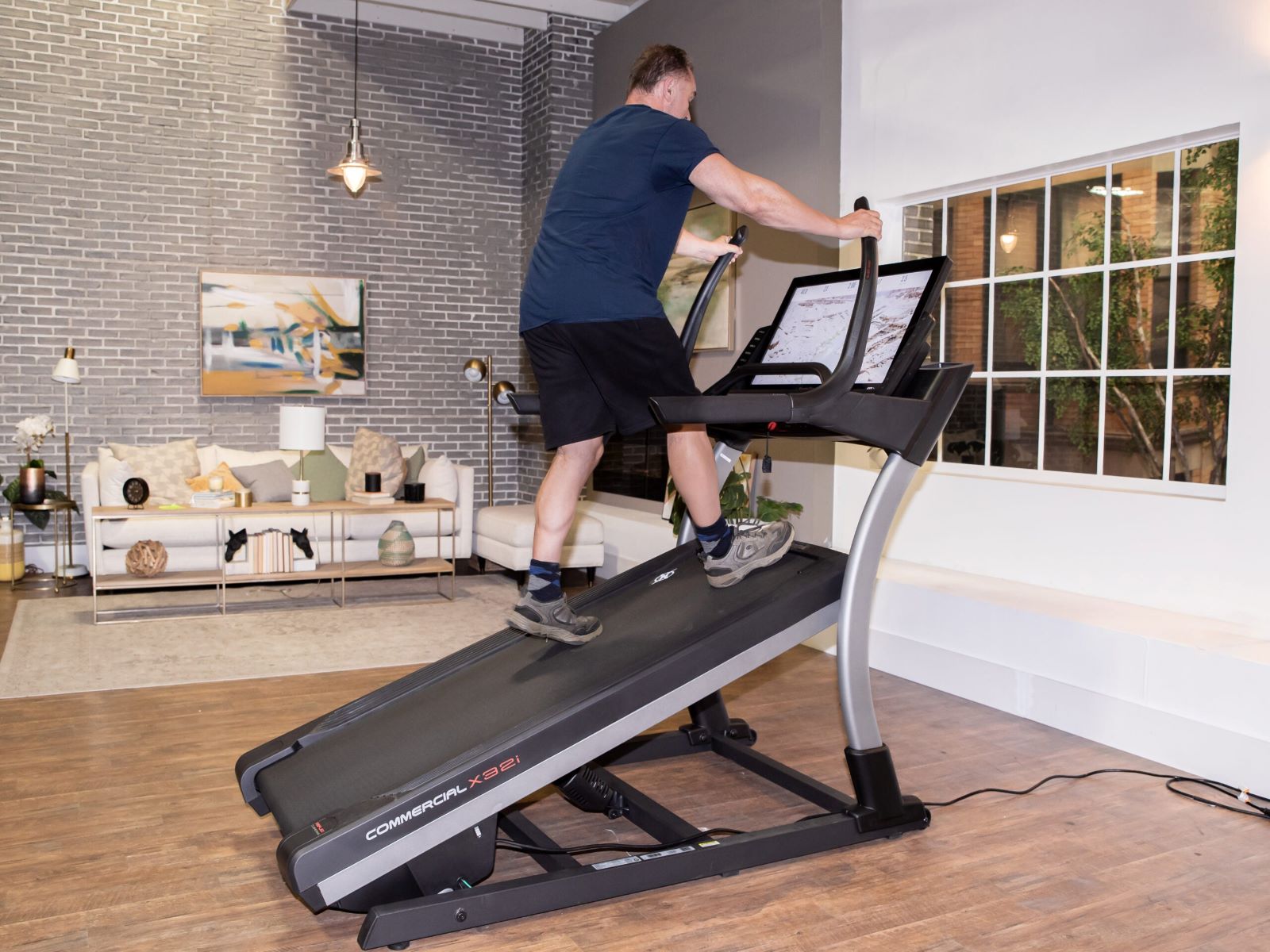

Featured
What Is A Good Treadmill Incline
Modified: August 21, 2023
Looking for a featured treadmill with a good incline? Discover the best options to enhance your workout and achieve your fitness goals.
Introduction
A treadmill is a popular exercise machine that allows individuals to walk, jog or run indoors. It offers convenience, flexibility, and effective workouts without the need to venture outside. One important feature of a treadmill that can greatly enhance your workout is the incline function.
The incline feature on a treadmill raises the running surface, simulating the effect of walking or running uphill. This adjustment creates a challenging and engaging workout experience that targets different muscle groups, boosts calorie burn, and improves cardiovascular endurance.
In this article, we will explore the benefits of using a treadmill incline, discuss factors to consider when choosing a treadmill with incline capabilities, recommend optimal incline settings for various goals, and highlight some common mistakes to avoid when using the incline feature.
Whether you are a beginner looking to enhance your fitness routine or an experienced athlete training for a specific event, understanding the benefits of a treadmill incline and making informed decisions about incline settings can take your workouts to the next level.
So, let’s dive into the world of treadmill inclines and discover how this feature can optimize your fitness journey.
Benefits of Treadmill Incline
The incline feature on a treadmill provides a range of benefits that can significantly enhance your workout. Here are some key advantages of incorporating incline into your treadmill sessions:
- Increased Calorie Burn: Walking or running on an incline requires more effort from your muscles, which results in higher calorie expenditure. Studies have shown that exercising on a treadmill with incline can burn up to 50% more calories compared to exercising on a flat surface.
- Targeted Muscle Activation: The incline feature engages different muscle groups, including the glutes, hamstrings, and calves, more intensely than walking or running on a flat surface. This helps to build strength and endurance in these areas, leading to a more well-rounded physique.
- Improved Cardiovascular Fitness: Working out on an incline challenges the cardiovascular system, forcing the heart to pump harder to deliver oxygenated blood to the working muscles. This helps to improve overall cardiovascular endurance and can be especially beneficial for those training for endurance events.
- Enhanced Lower Body Strength: The incline feature on a treadmill places more emphasis on the lower body muscles, including the quadriceps and glutes. Regular incline training can lead to increased leg strength and power, which can improve performance in various athletic activities.
- Variety in Workouts: Incorporating incline into your treadmill workouts adds variety and prevents boredom. By adjusting the incline level, you can simulate different terrains, such as hills or mountains, providing a more dynamic and engaging exercise experience.
These benefits highlight the importance of utilizing the incline feature on a treadmill. Whether your goal is to burn calories, build strength, or improve cardiovascular fitness, adding incline to your workouts can take your fitness journey to new heights.
Factors to Consider in a Good Treadmill Incline
When choosing a treadmill with incline capabilities, there are several factors you should consider to ensure you select the right model for your needs. Here are some key considerations to keep in mind:
- Maximum Incline Level: The maximum incline level determines how steep the treadmill can incline. Look for a treadmill that offers a wide range of incline options, from a slight incline for beginners to a steeper incline for more advanced users.
- Incline Adjustability: Check if the treadmill allows for smooth and easy adjustment of the incline level during your workouts. It should offer both manual and programmed incline adjustment options to help you tailor the intensity of your workout to your preference.
- Stability and Durability: It is essential to choose a treadmill that is stable and durable, especially when working out on an incline. Look for a treadmill that has a sturdy construction, a solid frame, and a wide running surface to provide stability and prevent any wobbling or shaking when the incline is raised.
- Programming and Features: Consider the variety of workout programs and features available on the treadmill. Some treadmills offer pre-programmed incline workouts that can automatically adjust the incline level throughout the session. Additional features such as heart rate monitoring, Bluetooth connectivity, and interactive training programs can also enhance your exercise experience.
- Cushioning: Pay attention to the cushioning system of the treadmill. Running or walking on an incline can put additional stress on your joints. Look for a treadmill with a high-quality cushioning system that absorbs shock and reduces the impact on your joints, providing a comfortable and safe workout.
- User Weight and Motor Capacity: Consider the weight capacity of the treadmill and ensure it can accommodate your weight. Additionally, check the motor capacity to ensure it can handle the incline function smoothly, especially if you plan to use higher incline levels or if multiple users will be using the treadmill.
By considering these factors, you can make an informed decision and choose a treadmill that will offer a good incline experience and meet your fitness goals. Remember to test out different models and read customer reviews before making a final decision.
Recommended Treadmill Incline Settings
When using a treadmill with an incline feature, it’s important to set the incline to the appropriate level based on your fitness goals and workout preferences. Here are some recommended incline settings for different objectives:
- Weight Loss and Calorie Burn: To maximize calorie burn and stimulate fat loss, set the treadmill incline between 1% to 5%. This slight incline increases the intensity of your workout and engages more muscles, resulting in higher calorie expenditure.
- Cardiovascular Endurance: For improving cardiovascular fitness and endurance, set the incline between 1% to 7%. This range challenges the heart and lungs, boosting their efficiency and strengthening your cardiovascular system over time.
- Strength and Muscle Building: If your goal is to build leg strength and muscle, set the incline between 5% to 10%. This steeper incline places greater emphasis on the lower body, specifically targeting the quadriceps, hamstrings, and glutes.
- Hill or Mountain Simulation: To simulate outdoor terrain, such as hills or mountains, set the incline between 7% to 15%. This range provides a more intense uphill experience and is ideal for users training for outdoor activities like hiking or trail running.
- Interval Training: Interval training involves alternating between high-intensity bursts and periods of recovery. For interval training, set the incline between 1% to 10%. Increase the incline during high-intensity intervals and reduce it during recovery periods to create an effective and challenging workout.
- Varied Workouts: To add variety to your workouts, experiment with different incline levels throughout your session. Incorporate incline intervals or pyramid workouts where you gradually increase and decrease the incline to keep your body and mind engaged.
Remember to listen to your body and adjust the incline according to your fitness level and comfort. Start with lower incline settings if you are new to treadmill incline workouts, and gradually progress over time as your fitness improves.
By utilizing these recommended incline settings, you can tailor your treadmill workouts to meet specific fitness goals and optimize your overall fitness journey.
Common Mistakes to Avoid with Treadmill Incline
While utilizing the incline feature on a treadmill can be highly beneficial, there are some common mistakes that people often make. By being aware of these mistakes, you can avoid them and make the most out of your treadmill incline workouts. Here are some common pitfalls to steer clear of:
- Starting with a High Incline: One of the most common mistakes is setting the incline too high, especially for beginners. Starting with a high incline level can put excessive strain on your muscles and joints, leading to discomfort or even injuries. Begin with a lower incline and gradually increase it as your fitness level improves.
- Leaning on the Handrails: Many individuals tend to lean on the handrails of the treadmill when using the incline. This diminishes the effectiveness of the workout and fails to engage the target muscles properly. Instead, maintain an upright posture and rely on your leg muscles to support your body weight.
- Using the Same Incline Level: Another common mistake is sticking to the same incline level for every workout. Your body adapts to repetitive routines, limiting the effectiveness of your workouts. Mix up your incline workouts by varying the incline levels, duration, and intensity to challenge your muscles and keep your workouts progressive.
- Neglecting Warm-up and Cool-down: Failing to warm up before exercising on an incline and skipping the cool-down period afterward can increase the risk of muscle strains and injuries. Always start your workout with a few minutes of gentle walking or light jogging on a flat surface to prepare your muscles, and end the session with a gradual decrease in incline and a few minutes of stretching.
- Overtraining: While treadmill incline workouts provide numerous benefits, overtraining can have negative consequences. It is essential to allow your body enough time to recover between intense workouts. Incorporate rest days into your routine and listen to your body’s signals to avoid burnout or overuse injuries.
- Ignoring Proper Form: Maintaining proper form during treadmill incline workouts is crucial for preventing injuries and maximizing results. Avoid bouncing or slouching, and ensure your foot strikes the treadmill surface with a midfoot or forefoot strike, rather than heel striking. Engage your core muscles, and swing your arms naturally for better balance and coordination.
By avoiding these common mistakes and adopting proper techniques, you can optimize your treadmill incline workouts, minimize the risk of injuries, and achieve better results.
Conclusion
The incline feature on a treadmill can significantly enhance your workout experience and help you achieve your fitness goals more effectively. By incorporating incline into your treadmill sessions, you can increase calorie burn, target specific muscle groups, improve cardiovascular endurance, and add variety to your workouts.
When selecting a treadmill with incline capabilities, consider factors such as the maximum incline level, adjustability, stability, programming features, cushioning, user weight capacity, and motor capacity. These factors will ensure that you choose a treadmill that meets your needs and provides a safe and comfortable workout environment.
When utilizing the treadmill incline, it is important to set the incline to the appropriate level based on your objectives. Whether you’re aiming to lose weight, build strength, improve cardiovascular fitness, simulate outdoor terrain, or engage in interval training, adjusting the incline to the recommended settings will help you reach your goals effectively.
In addition, be aware of common mistakes to avoid when using the treadmill incline. Starting with a high incline, leaning on the handrails, neglecting warm-up and cool-down periods, using the same incline level, overtraining, and ignoring proper form can hinder your progress or lead to injuries. By practicing proper techniques and being mindful of these mistakes, you can make the most out of your treadmill incline workouts.
Remember that the inclusion of the treadmill incline feature should align with your individual fitness level and goals. It’s essential to listen to your body, seek guidance from fitness professionals if needed, and gradually progress as your strength and endurance improve.
So, whether you’re a beginner or an experienced athlete, embrace the benefits of treadmill incline workouts and make them a valuable part of your fitness routine. With the right treadmill and proper techniques, you can elevate your workouts and embark on a journey towards improved health, strength, and endurance.

